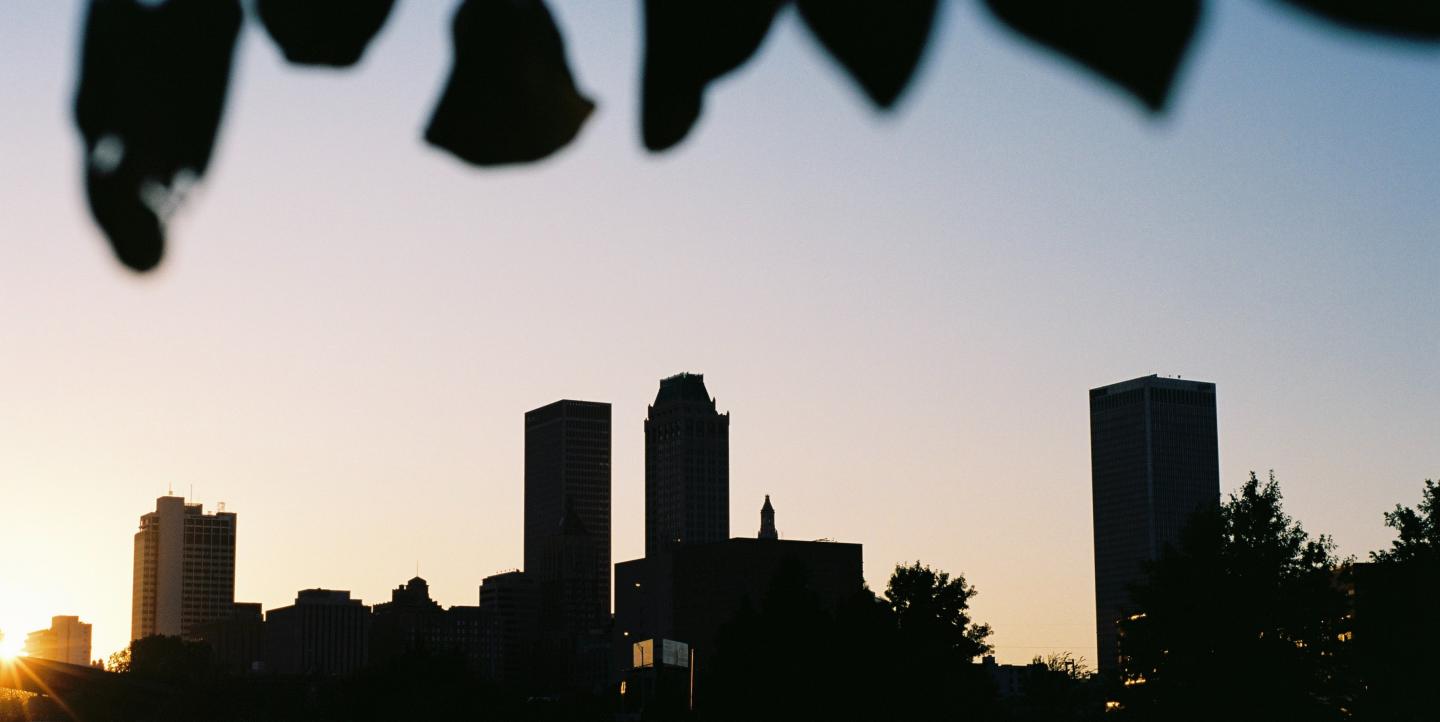In 2011, Lee Roy Chapman, a citizen journalist and historian in Tulsa, Oklahoma, published a groundbreaking story that would shake the city. He discovered that one of the city's founders and most prominent residents, Tate Brady — whose name adorned an entire neighborhood district in the downtown area — was tied to the Ku Klux Klan and involved in the 1921 Tulsa Race Massacre.
In a city rife with racial inequities and the site of one of the worst racial injustices in the history of the United States, Chapman’s reporting broke new ground and forever changed the city.
His reporting led the City Council to rename a street after a different Brady, and the district originally named the Brady Arts District was renamed to the Tulsa Arts District. In 2015, Chapman passed away, but his memory and his drive to uncover the hidden secrets of Tulsa, Oklahoma’s second-largest city, lives on in the Center for Public Secrets.
Chapman first founded the Center for Public Secrets in 2008, but it wasn’t until the beginning of 2020 that the institution had a brick-and-mortar space to call its own. The Center incorporates the work of artists, journalists and musicians to tell the untold stories of Tulsa through articles, events and podcasts.
“We were starting to have events but then COVID hit,” said Traci Chapman, Lee Roy’s sister who helped spearhead the effort for the physical space through donations from community members.
The Center was forced to rethink its programming due to COVID-19, and it’s still a work in progress. They held “Art in the time of COVID,” an art gallery opening with social distancing measures in place, but they are also considering turning it into a studio space in order to hold virtual events and workshops.
“We might have speakers, but it would be online or streaming,” she said. “That’s kind of our plan for now until COVID changes again.”
The Center is run by volunteers and relies on donations, said Michael Mason, a founding member of the Center.
[Read more: Tulsa-based journalist offers nuanced view of city's history through new exhibition]
Traci Chapman said her brother was instrumental in shining a light on many of the issues around racial injustice in Tulsa, including investigations into the Tulsa Race Massacre, the mass graves investigation and more. He began researching the topics as far back as 2005, she said. However, he was not a journalist by training.
He “floated from odd job to odd job, subsisting on contract labor, handouts and the generosity of friends and patrons,” Mason said. “He was also an experienced screenprinter and designed a variety of posters, stickers, buttons and t-shirts.”
Throughout his life, Lee Roy Chapman found artifacts and read historical records for his own interest, and then collaborated with journalists to produce stories that tied together his findings, Mason said. “Nearly all Chapman's work in the last decade of his life was collaborative in nature,” he added.
To continue his work, journalists are invited to view Lee Roy Chapman's collected papers, said Mason, which include an emphasis on Okie subculture, the history of Oklahoma music and documents related to the Race Massacre.
Volunteers hope that in exploring the work of Lee Roy Chapman, and in using the resources of the Center, they’ll begin to complicate long-held narratives. “Mainstream media stories often begin with fundamental assumptions,” Mason said. “The Center for Public Secrets will question and confront those assumptions, starting with the question of place. It's important to know who you are in relation to where you are, because the answers to these questions determine how you decide to live.”
Though his work uncovered many of the unsavory aspects of Tulsa, Traci Chapman said he did that because of his deep love and affection for the city he moved to when he was about four years old.
“He was so passionate about the history of Tulsa,” Traci Chapman said. “And just loved the city itself. After his passing, my sister and I decided we needed to continue that and keep that going — whether it was his artwork, his history or recovery, his love of the city of bringing the real kind of history to Tulsa to light as opposed to just the sugar-coated version of it.”
[Read more: 6 must-know hacks for investigative journalists]
She said she hopes in the future that the Center for Public Secrets can be a place where people come and conduct research and continue some of the stories he started.
“We really want to develop another generation of history recovery specialists,” she said. “We think it’s important not only to carry his legacy on, but for the City of Tulsa.”
Chief Egunwale Amusan, president of the African Ancestral Society, a nonprofit based in Tulsa, is a current board member at the Center for Public Secrets. He was close friends with Lee Roy Chapman.
“Lee Roy was the kind of person who was a walking institution, and the thing about walking institutions is they’re never in one place,” he said. “Having that intuition to materialize in this form, it gives other people in the community an opportunity to unfold, unravel things — thoughts, questions, artwork, just human expression.”
For Traci Chapman, she believes her brother’s love of all things Tulsa history and hidden secrets is what drove him.
“I definitely think the history — whether it be of Tulsa or just bringing the hidden history to light — was the light in his life,” she said. “I think that was one of the things that kept him going.”
Main image CC-licensed by Unsplash via Johnathan Basquez.
Kristi Eaton is a freelance journalist and Tulsa Artist Fellow based in Tulsa, Oklahoma.


